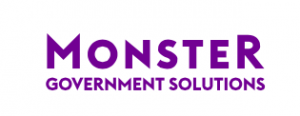This blog post is an excerpt from GovLoop’s recent guide The Human Resources Playbook for Government. Download the full guide here.
Younger professionals are redefining the workforce of the future, specifically millennials and digital natives born in the mid-1990s and 2000s, or Generation Z. They are driven by mission and a strong sense of purpose to transform their communities and the nation for the better.
This sense of purpose is what agencies must tap into when recruiting next-generation talent. “Thankfully, government agencies are mission-driven by nature,” said Tim Lagan, Director of Professional Services at Monster Government Solutions, a HR solutions provider for the public sector.
“They are making policies and programs every day that will transform the world we live in.”
Expressing that commitment to changing the world is paramount when attracting fresh talent, but that is something many agencies struggle to do. That’s why they must focus on creating a strong brand that tells their story and appeals to a diverse workforce.
A great first step when developing a brand is asking your current employees why they enjoy working at your agency and then relaying that message to your potential hires. According to the annual Federal Employee Viewpoint Survey, nine out of 10 government employees say their work is important, so they will send the right message to younger recruits.
“But to reach top candidates, you have to go where millennials and Gen Z live — online,” Lagan said. “Your brand presence needs to be available on a mobile- friendly website so these young prospects can find it. About 20 percent of people in this age group only use mobile devices to access the internet, so this is essential.”
Lagan highlighted Marines.com as an example of a website that leads with its brand. “You know right away that working there would allow you to have a huge impact in the world,” he said.
Maintaining a strong online presence also means having active social media accounts. By using Facebook, Twitter or Instagram, you can reinforce that brand message through channels many next-gen prospects use every day. This is also a great way to find passive candidates that have niche skills in areas like IT and cybersecurity. In 2015, Federal CIO Tony Scott said the government has some 10,000 openings for cybersecurity jobs. Based on additional reports, that number could be closer to 15,000.
The challenge for agencies is finding skilled, younger workers to replace an aging workforce. “Only about 7 percent of current government workers are under 30, compared with 30 percent in the private sector,” Lagan said.
One reason for such low numbers is the federal government’s job application process. “We are relying on millennials and Gen Z to find and search job boards that often end with extremely lengthy applications,” Lagan noted. “Instead, we could be leveraging tools that allow HR departments to proactively pique these candidates’ interests. Cutting-edge hiring tools can integrate with emails and social posts for a much easier recruiting experience.”
Some agencies are taking an innovative approach to address the government’s most pressing hiring challenges. For example, NASA, which has been rated the top agency to work for the last four years, tells the story of its culture using the hashtag #NASAProud on Twitter. NASA officials interview current employees on why they love the work they do. It gives a real human element to the agency and provides that personal sense of belonging that millennials and Gen Z look for.
Lagan shared practical steps that all agencies can take to improve recruiting and hiring.
The first is build your message. Make sure your agency is branded to show how it is making an impact. You can also stress the soft benefits of working for the government.
Next, think like a digital native. Next-gen talent does its research online when looking for a job. You can continue to reach them by adding appealing new content to your career site to boost your relevance in search engines and attract organic visitors.
Lastly, make sure you are spreading the word through social media platforms. Putting your message on social channels and tracking your interactions with passive and active candidates will put your agency front and center in the minds of young talent looking for a new job.
“While many of these tips are tactical for HR managers and hiring departments, it is up to all employees up and down the chain at government agencies to spread the word,” Lagan said. “By sharing their stories of why the work they do is important and how their agency is changing the world, each and every person in your organization can make a significant impact on recruiting next-gen talent.”





Leave a Reply
You must be logged in to post a comment.